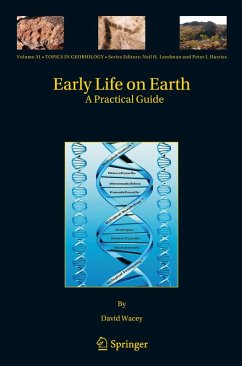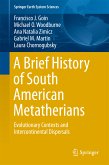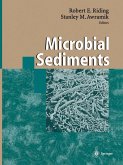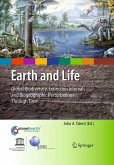When did life first appear on Earth and what form did it take? The answer to this intriguing and fundamentally important question lies somewhere within the early Archean rock record. The young Earth was, however, a very different place to that we know today and numerous pitfalls await our interpretation of these most ancient rocks.
The first half of this practical guide equips the reader with the background knowledge to successfully evaluate new potentially biological finds from the Archean rock record. Successive steps are covered, from locating promising samples in the field, through standard petrography and evaluation of antiquity and biogenicity criteria, to the latest state of the art geochemical techniques. The second half of the guide uniquely brings together all the materials that have been claimed to comprise the earliest fossil record into an easily accessible, fully illustrated format.
This will be a handbook that every Archean geologist, palaeobiologist and astrobiologist will wish to have in their backpack or on their lab-bench.
The first half of this practical guide equips the reader with the background knowledge to successfully evaluate new potentially biological finds from the Archean rock record. Successive steps are covered, from locating promising samples in the field, through standard petrography and evaluation of antiquity and biogenicity criteria, to the latest state of the art geochemical techniques. The second half of the guide uniquely brings together all the materials that have been claimed to comprise the earliest fossil record into an easily accessible, fully illustrated format.
This will be a handbook that every Archean geologist, palaeobiologist and astrobiologist will wish to have in their backpack or on their lab-bench.
Dieser Download kann aus rechtlichen Gründen nur mit Rechnungsadresse in A, B, BG, CY, CZ, D, DK, EW, E, FIN, F, GR, HR, H, IRL, I, LT, L, LR, M, NL, PL, P, R, S, SLO, SK ausgeliefert werden.
From the reviews:
"Suitable for graduate students and early career researchers, this book provides a useful introduction to the current understanding of life on the early Earth. The excellent images and use of bullet points and tables to encapsulate key information make this book highly readable ... providing suggestions for additional reading for those who want (or need) to know more. The text is clear and well-written ... . This book is thought-provoking ... ." (Alison J. Wright, The Astrobiology Society of Britain, September, 2009)
"Wacey ... has chosen a daunting task: to review everything more than three billion years old that anyone has interpreted as a body, trace, or chemical remnant of life on Earth. ... At approximately 100 pages, this overview is quite succinct, yet well illustrated and comprehensively referenced. ... Pound for pound, this may be the best available summary of evidence of Earth's earliest life ... a good introduction for nonspecialists. Summing Up: Highly recommended. Upper-division undergraduate through professional collections." (B. M. Simonson, Choice, Vol. 47 (3), November, 2009)
"Gives the reader a general overview of early-life studies ... . The topics are presented in such a way that even a non-scientist would be able to grasp most of the basic concepts. ... The topics covered are well-organized and clearly explained, and each section is followed by extensive lists of references for further reading. I would certainly use this book as the basis of an introductory course curriculum at the upper undergraduate or graduate level." (Dina M. Bower, Geologos, Vol. 16 (3), September, 2010)
"Suitable for graduate students and early career researchers, this book provides a useful introduction to the current understanding of life on the early Earth. The excellent images and use of bullet points and tables to encapsulate key information make this book highly readable ... providing suggestions for additional reading for those who want (or need) to know more. The text is clear and well-written ... . This book is thought-provoking ... ." (Alison J. Wright, The Astrobiology Society of Britain, September, 2009)
"Wacey ... has chosen a daunting task: to review everything more than three billion years old that anyone has interpreted as a body, trace, or chemical remnant of life on Earth. ... At approximately 100 pages, this overview is quite succinct, yet well illustrated and comprehensively referenced. ... Pound for pound, this may be the best available summary of evidence of Earth's earliest life ... a good introduction for nonspecialists. Summing Up: Highly recommended. Upper-division undergraduate through professional collections." (B. M. Simonson, Choice, Vol. 47 (3), November, 2009)
"Gives the reader a general overview of early-life studies ... . The topics are presented in such a way that even a non-scientist would be able to grasp most of the basic concepts. ... The topics covered are well-organized and clearly explained, and each section is followed by extensive lists of references for further reading. I would certainly use this book as the basis of an introductory course curriculum at the upper undergraduate or graduate level." (Dina M. Bower, Geologos, Vol. 16 (3), September, 2010)









